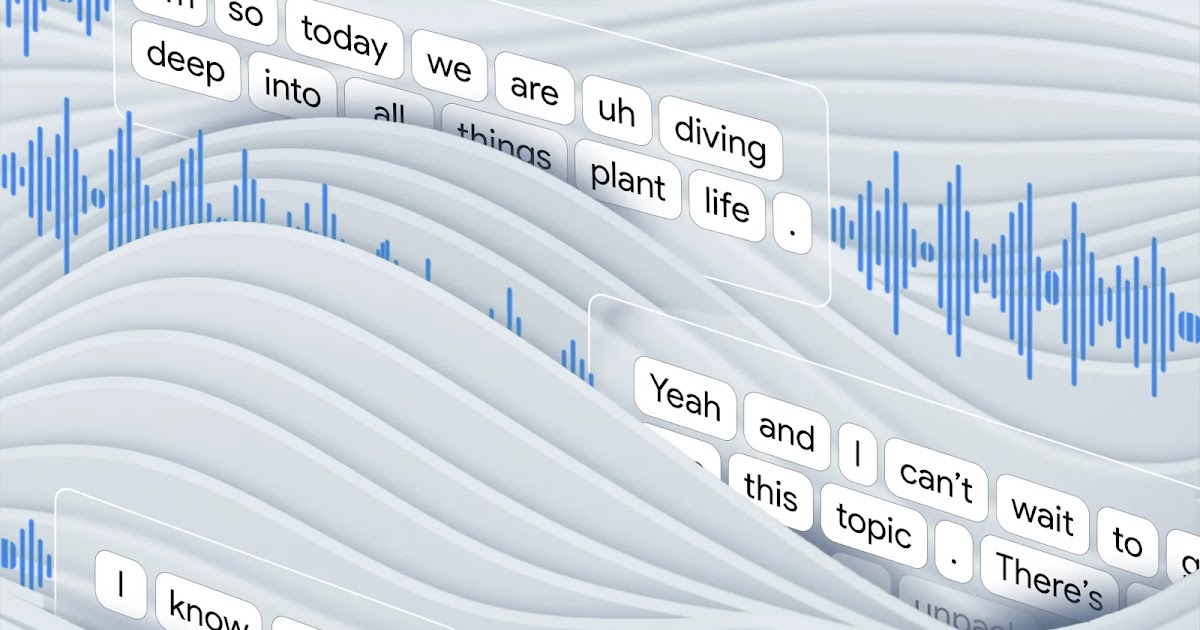Expanding the Horizons of Audio Generation

Advancements in Speech Generation Technology
The Importance of Speech in Communication
Speech plays a crucial role in how humans connect with one another. It enables the sharing of information, the expression of emotions, and the establishment of mutual understanding. With advancements in technology, especially in AI and digital assistants, the way we generate and interact with speech is evolving rapidly. By developing more natural and engaging digital voices, companies are enhancing user experiences across various platforms and applications.
Breakthroughs in Audio Generation Research
In recent years, there have been significant strides in audio generation technology. Research efforts have focused on creating high-quality, dynamic speech from different inputs, including text and specific voice profiles. This innovation has been integrated into multiple Google products, such as:
- Gemini Live
- Project Astra
- Journey Voices
- YouTube’s auto dubbing
These tools aim to offer a more conversational and intuitive experience for users interacting with AI-driven assistants.
Innovative Features for Enhanced Accessibility
Recent collaborations within Google have led to the development of two groundbreaking features aimed at making complex content easier to understand:
NotebookLM Audio Overviews: This feature transforms uploaded documents into lively and engaging dialogues. Two AI hosts summarize content, relate topics, and engage in conversational banter.
- Illuminate: This tool generates formal discussions based on research papers, making complex information more digestible for users.
These innovations are built on advanced speech generation research, paving the way for more interactive and rich user experiences.
Techniques for Natural Audio Generation
For years, companies have been exploring ways to produce more natural dialogue in audio generation. Previous projects like SoundStorm have demonstrated the capability to create 30-second segments of realistic dialogue between various speakers. This technology was built upon earlier work, such as SoundStream and AudioLM.
SoundStream uses a neural audio codec to compress and decompress audio inputs without losing quality. It learns to map audio into acoustic tokens, capturing essential features like prosody and timbre.
- AudioLM approaches audio generation as a language modeling task, producing the necessary acoustic tokens without making assumptions about the audio’s nature. This flexibility allows it to handle various sounds, including multi-speaker dialogues.
Efficiently Generating Longer Speech Segments
Recent advancements allow for the generation of up to two minutes of dialogue with improved acoustic quality and naturalness. With the support of a Tensor Processing Unit (TPU) v5e chip, this high-quality audio can be produced in under three seconds.
To achieve this, an efficient speech codec compresses audio into a series of tokens at a low bitrate of 600 bits per second while maintaining output quality. These tokens are organized hierarchically by their various phonetic and acoustic features.
In order to produce more extended speech dialogue sequences—over 5000 tokens might be generated—a specialized Transformer architecture was developed. This architecture is designed to efficiently manage complex hierarchical information, giving rise to a more dynamic audio output.
Training the Model for Realistic Dialogue
To enhance the quality of generated dialogues, the model was pre-trained on extensive speech data—hundreds of thousands of hours—followed by fine-tuning on a smaller dataset featuring high-quality, natural dialogues. These datasets included unscripted conversations that illustrate real-life speech patterns, such as pauses and filler words known as disfluencies. The result is a model capable of producing studio-quality audio with realistic timing and tone, allowing seamless transitions between different speakers.
Commitment to Responsible AI Development
In line with ethical AI principles, measures such as SynthID technology are included to watermark AI-generated audio content. This approach aims to prevent misuse of the technology by ensuring authenticity and tracking the origins of the generated content.
Future Prospects in Speech Technology
Looking ahead, the focus remains on enhancing fluency and acoustic quality while allowing for finer control over features like prosody. There are also efforts to combine these advances with visual modalities, particularly in video contexts. The potential applications for sophisticated speech generation are vast, promising to improve learning experiences and accessibility in content delivery. By further enhancing the capabilities of voice-based technologies, the aim is to foster richer user interactions and broaden the scope of digital communications.






